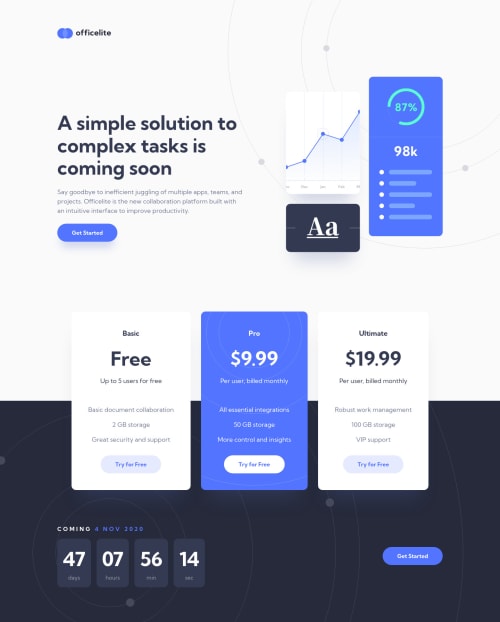Submitted about 3 years agoA solution to the Officelite coming soon site challenge
Officelite Coming Soon Site | Fluid Space and Fluid Typography
accessibility, lighthouse, sass/scss, bem
@vanzasetia

Solution retrospective
Hello Everyone! 👋
I finally completed another challenge! 🎉
In this challenge, I completed the challenge by using fluid space and fluid typography which by using clamp() functions a lot. I also used CSS logical properties.
Any questions on the technique that I'm using are welcome! Of course, any suggestions on how I can improve are welcome! 😁
Also, if you have finished this challenge and would like me to give feedback on it, please include a link to your solution. I would be glad to help you! 😀
Thanks!
Code
Loading...
Please log in to post a comment
Log in with GitHubCommunity feedback
No feedback yet. Be the first to give feedback on Vanza Setia's solution.
Join our Discord community
Join thousands of Frontend Mentor community members taking the challenges, sharing resources, helping each other, and chatting about all things front-end!
Join our Discord